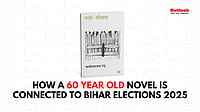In selecting a team to represent this era, I faced the problem of who to omit because competition for places was so high. How do you pick just two all-rounders from players of the calibre of Ian Botham, Kapil Dev and Imran Khan? They were all wonderful players and each capable of turning or winning a match with an inspired individual performance with either the bat or the ball. With only five batting positions available, any one of 15 outstanding batsmen would justify their selection. Two wicketkeepers stood out as being head and shoulders above the rest. However, making the final choice was difficult.
In the fast bowling department, Dennis Lillee, Michael Holding, Joel Garner, Malcolm Marshall, Andy Roberts and Gary Gilmour would all rate highly as contenders for the two positions. There have been few world-class spinners who have dominated in World Cup cricket, but one man in particular, Derek Underwood, was so highly respected for his accuracy that he could have played and been successful during any era.
The final composition of my team to represent those countries which competed in the first four World Cups reflects the strength and depth of the West Indies, who were the world champions in 1975 and 1979 and finalists again in 1983. They provide four players. Australia, winners of the 1987 World Cup in India/Pakistan, provide three players, as does England. The structure of cricket competition in England allows their players to play more one-day cricket than anyone else. However, they are yet to win a World Cup.
Whilst Pakistan provides one player, New Zealand, India and Sri Lanka are not represented, yet they have all produced some fine players who featured in a number of wonderful victories.
Unfortunately, because of the isolation of South Africa from the international sporting arena during this era, I was unable to consider two players whom I rate very highly. Graeme Pollock, a master batsman of power, strength and timing, and Mike Proctor, who was a magnificent all-rounder, bowling with pace and swing, and an explosive hitting batsman.
My final team is as follows. There is no doubt that the best opening batsmen of that era were Gordon Greenidge and Desmond Haynes, both committed and reliable performers who invariably got the West Indies off to quick and efficient starts, establishing a wonderful foundation for following players to build on. They were destructive batsmen of contrasting styles, yet they complemented each other.
At the dismissal of Greenidge or Haynes, the "master blaster" Viv Richards would stride to the crease where, full of confidence, he would put fear into the hearts of bowlers before proceeding to hit their good deliveries mercilessly for fours and sixes. Richards, who was somewhat unorthodox in his approach, liked to hit the ball on the leg-side, but his off-drive, by stepping outside the leg stump, was awesome. An hour of Viv Richards at the crease was always worth the admission price.
Greg Chappell was a tall, fluent and elegant bats-man who always looked poised and in control. He was a cultured, classy and wonderful stroke-maker, who drove the ball in a classical fashion, playing shots all around as he kept the scoreboard ticking over. Chappell collected his runs with a variety of well-timed ones and twos, interspersed with a number of well-hit boundaries. His useful medium-paced bowling added variety to the bowling attack.
A left-handed batsman was necessary in the line-up and Clive Lloyd, Allan Border and David Gower vied for this position. My preference is for Gower, a naturally talented player with grace and flair. He was a wonderful timer of the ball and was very strong both off his legs or hitting the ball through the off-side. I found him difficult to bowl to and to contain. In his earlier days he was also a good fielder.
Ian Botham and Imran Khan won the all-rounder positions. Both were match-winners of contrasting styles. Botham was the character, the larger-than-life cricketer with an enormous reputation who loved a challenge. His dominating physique and power made him a big hitter with the bat; and with the ball he had the rare ability to get batsmen out with at times mediocre deliveries. His slip catching was very reliable and at times brilliant.
In my opinion, Imran was the best all-rounder of my era. He was very consistent and could always be relied upon to perform. He could bat anywhere in the order, play any type of innings, from a cautious build-up to awesome strokeplay. His bowling was potent, particularly his in-swingers bowled wide of the crease.
Rod Marsh pipped Alan Knott for the wicket-keeping position. It was a difficult decision, but I felt Marsh could be classed as an all-rounder who commanded respect. This was because he kept wickets magnificently to fast bowlers, was handy as a batsman, as well as being a left hander with an aggressive attitude.
The pace attack was perhaps the most difficult to select. After Botham and Imran, I needed two others. I chose Dennis Lillee, arguably the greatest fast bowler ever, and Joel Garner. Lillee was a big, strong, confident, aggressive bowler with wonderful technique and skill. 'Big Bird' Garner was perhaps one of the most accurate fast bowlers the world has seen. He bowled with pace, got the ball to bounce and had a magnificent yorker which dismissed many batsmen, and was difficult to score from.
Derek Underwood, deservedly nicknamed 'Deadly', won the spinning berth ahead of Abdul Qadir because of his nagging length, accuracy and variation. He could bowl on any pitch condition and although he was quite quick for a spinner, he often got his wickets by skillfully frustrating the batsmen.

























